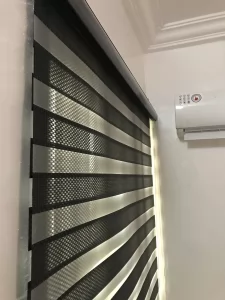In the fast-paced world of business, navigating the corporate landscape requires a blend of strategic foresight, adaptability, and a commitment to lifelong learning. Having traversed the intricate pathways of the business world for decades, a seasoned business leader can offer valuable insights and lessons for those aspiring to succeed. Here are key takeaways to thrive in the corporate realm:
Embrace Change and Innovation: Change is the only constant in the corporate world. Embrace it, understand it, and learn to adapt quickly. The business landscape evolves rapidly due to technological advancements and shifts in consumer preferences. Innovative ideas and adaptability to change can be the differentiators that propel a company forward.
Cultivate Strong Relationships: Networking and building strong relationships are pivotal. Cultivate genuine connections with colleagues, clients, and industry peers. Successful business ventures often stem from meaningful relationships. Mutual respect and collaboration can open doors to new opportunities and knowledge sharing.
Prioritize Ethics and Integrity: Uphold ethical principles in all business dealings. Long-term success is built on trust and integrity. Ethical behavior fosters a positive reputation, attracting loyal customers and talented professionals. Remember, it takes years to build a good reputation but mere moments to destroy it.
Master the Art of Effective Communication: Communication is the bedrock of successful leadership. Develop excellent communication skills, both verbal and written. Clear, concise, and persuasive communication can influence stakeholders, motivate teams, and drive initiatives forward. Listen actively, understand perspectives, and communicate with empathy.
Be Resilient in the Face of Challenges: Business is fraught with challenges. Learn to stay resilient, maintaining focus and determination during tough times. Overcome setbacks, learn from failures, and use them as stepping stones to eventual success. Resilience is a defining characteristic of great leaders.
Invest in Continuous Learning: The learning journey never ends. Stay informed about industry trends, market dynamics, and emerging technologies. Attend workshops, seminars, and pursue relevant certifications to enhance your skill set. A commitment to continuous learning demonstrates your dedication to personal and professional growth.
Promote a Culture of Collaboration: Encourage collaboration within your teams and across departments. A collaborative culture fosters creativity, diverse perspectives, and collective problem-solving. Work together toward common goals, leveraging the strengths of each team member to drive success.
Balance Work and Life: Strive for a healthy work-life balance. Burnout can negatively impact performance and well-being. Prioritize self-care, family time, and hobbies that rejuvenate your spirit. A balanced life ensures sustained productivity and a more fulfilling career journey.
In conclusion, navigating the corporate landscape demands a multifaceted approach encompassing adaptability, ethical conduct, Javad Marandi effective communication, resilience, continuous learning, collaboration, and maintaining a balanced life. These lessons from a seasoned business leader can guide aspiring professionals towards a successful and fulfilling journey in the corporate world.





